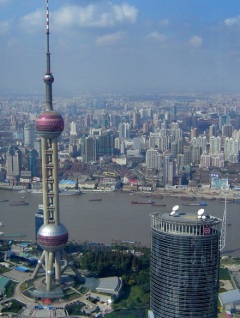China spends more on importing chips than oil
 Monday, September 30, 2013 at 7:37PM
Monday, September 30, 2013 at 7:37PM China spends a lot more on importing chips than oil. According to iSuppli, China last year imported $192 billion in integrated chips and a mere $120 billion in oil.
This matters in China - and in the telecom sector in particular - because despite tipping all of that cash into semiconductor industry's pockets, domestic handset firms are well back in the queue for the Qualcomm and ARM chips that power top-range devices.
More than half of China Mobile’s recent TD-LTE handset tender went to devices using Qualcomm chips. Among Chinese firms, only Huawei's Hisilicon chip unit won a share.
A paper by State Council Research Office a month ago said 80% of China’s chips come from abroad, China Business News reports. A touch sourly, the report notes that:
China in one year produces 1.18b handsets, 350m computers and 130m colour TVs - all no. 1 worldwide. But the high-end patent fees embedded in these reduces all of us to manual workers for the international vendors.
In truth China industry lacks the scale as well as the expertise of the big US, Korean and Taiwan chip players.
iSuppli senior semiconductor analyst Vincent Gu points out to China Business News that Taiwan fab TSMC has annual sales of $10 billion, greater than China's top four companies combined. TSMC and Intel are investing $10b each year, and China just $400-$500m.
In this thoughtful blog on the topic, Dieter Ernst, a senior fellow at the East-West Center, says the gap between China’s chip consumption and production grew from $5.7b in 1999 to $100.5b in 2011, aided in particular in the last few years by steepling imports of advanced wireless chips. He writes:
China remains way behind the technology frontier in both fabrication and design, reflected in a weak portfolio of essential semiconductor patents. China still has a long way to go before it can shape, or even co-shape, the industry’s technology trajectory.
One reason is that while China is deeply integrated into the global semiconductor production chain, “China’s leadership views such deep global integration primarily as a threat to its domestic innovation capacity, rather than an opportunity.”
Additionally, the sector is caught between by two disconnected drivers - the government’s indigenous innovation policy and the industry’s own real-world practice of global technology sourcing.
The result is “a fragmented innovation system that is ill-equipped” to respond to the challenges of the global value chain.
 Robert |
Robert |  Post a Comment |
Post a Comment |  Hisilicon,
Hisilicon,  Innovation,
Innovation,  Qualcomm,
Qualcomm,  chips,
chips,  supply chain in
supply chain in  Handsets
Handsets 
